Best
Capo for
Classical
Guitarists
Nylon String Capo, Chrome DISCOVER NEW TONAL
POSSIBILITIES
-
Overall:
Robust Zinc Construction -
Best Feature:
Maximum Width: 52mm -
TedScore™:
8/10
Best
Capo for Steel
String Guitars
-
Overall: With A Stylish Finish That Will Complement Almost Any Guitar Finish
-
Best Feature: Has An Intuitive Design For Smooth Operation
-
TedScore™: 10/10
Best
Capo for
12-String Guitars
Curved Black SUPERB AND DURABLE CAPO
-
Overall:
Boasts Outstanding Durability With Its Aircraft-Quality Aluminum -
Best Feature: Comes With Padding To Ensure Your Guitar's Safety
-
TedScore™: 9/10
Have you ever wondered about the secret weapon in a guitarist’s toolkit? In this article, we’ll answer the burning question: When Was the Capo Invented?
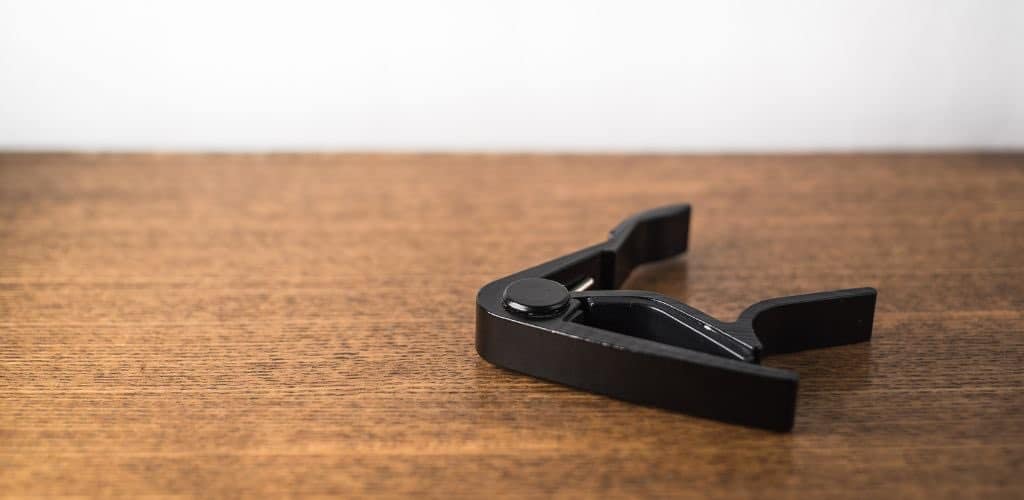
This simple yet magical device, known as the capo guitar, has transformed the way musicians play, allowing them to change keys with ease and unlock new sounds. We’ll take you on a journey through the capo’s history, exploring its origins and how it has evolved over the years.
So, grab your guitar, and let’s find out the fascinating world of the capo—your next musical adventure starts here!
The Early Beginnings of the Guitar Capo
ONE
The capo’s journey began long before it became a staple in modern guitar playing.
Its roots can be traced back to ancient stringed instruments.
Ancient Instruments: The concept of altering pitch dates back to ancient civilizations that used various stringed instruments. Instruments like the lute and the lyre often employed rudimentary devices to change the pitch of the strings.
Medieval Innovations: By the medieval period, musicians were experimenting with different techniques to achieve varied sounds. This experimentation laid the groundwork for the development of the capo as we know it today.
The First Capos: The earliest forms of capos were likely simple wooden or leather devices that could clamp down on strings. They were used to achieve different keys without changing fingerings, much like modern capos.
Cultural Variations: Different cultures had their versions of pitch-altering devices, showcasing the universal desire to explore musical possibilities. These early innovations paved the way for the modern capo.
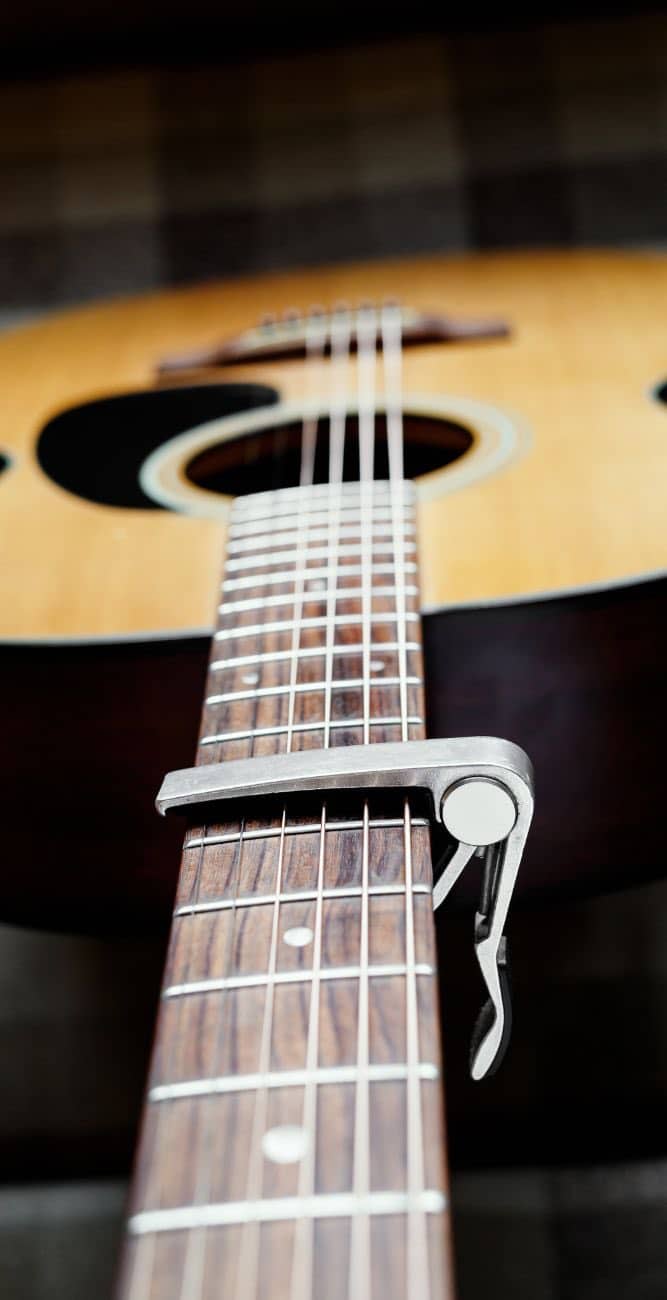
The Capo in the Renaissance
two
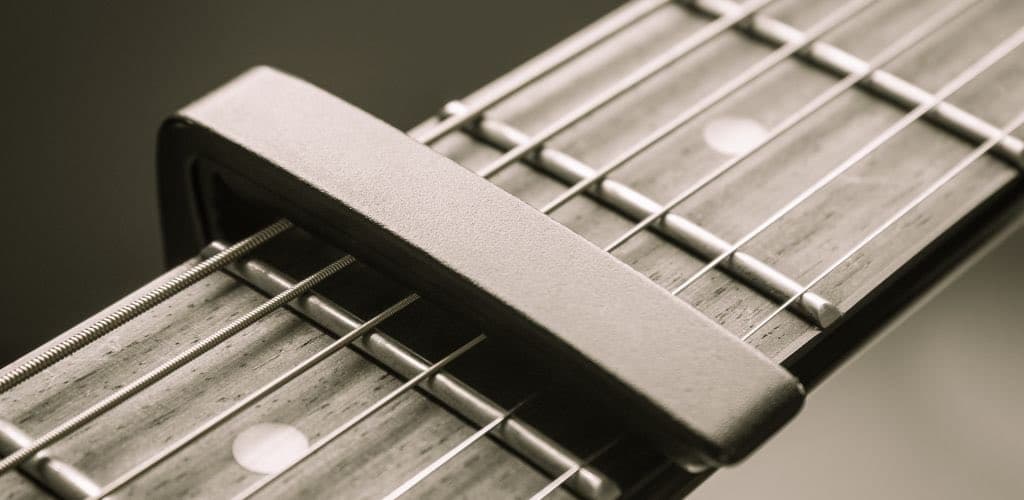
As we move into the Renaissance, the capo began to take on a more recognizable form. This period was a golden age for music, and the capo played a role in its evolution.
Lute and Theorbo: During the Renaissance, the lute and theorbo were popular instruments that often employed capos. Musicians used these devices to change keys quickly and easily, enhancing their playing versatility.
Standardization: The design of capos began to standardize during this time, with many musicians crafting their versions. This led to a variety of styles and designs, each tailored to the musician’s needs.
Written Music: The rise of written music during the Renaissance made it easier for musicians to share techniques. This sharing included the use of capos, which became more widely accepted in musical practice.
Influence on Guitar: The innovations of the Renaissance laid the foundation for the modern guitar. As the guitar evolved, so too did the capo, adapting to the needs of a new generation of musicians.
The Capo in the 19th Century
Three
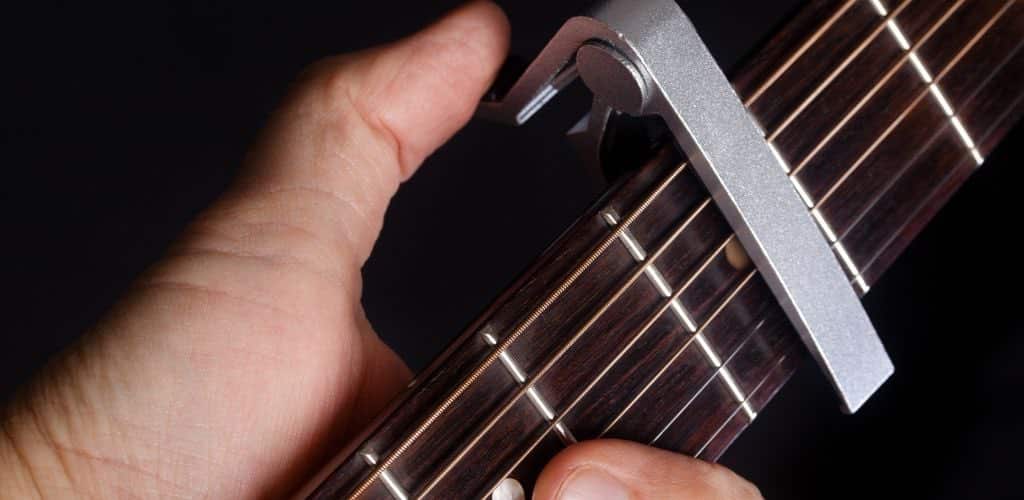
The 19th century saw significant changes in music and instrument design, and the capo was no exception. Let’s explore how this period shaped the capo’s development.
The Birth of the Modern Guitar: The guitar transformed during the 19th century, evolving into the instrument we know today. As the guitar gained popularity, the capo became an essential accessory for guitarists.
Commercial Production: With the rise of mass production, capos began to be manufactured commercially. This made them more accessible to musicians, allowing more players to benefit from their use.
Variety of Designs: The 19th century introduced a variety of capo designs, including those made from metal and rubber. These innovations improved functionality and ease of use, making capos more user-friendly.
Influence on Genres: As different musical genres emerged, the capo found its place in folk, blues, and early rock music. Its ability to change keys quickly made it a favorite among musicians looking to experiment with sound.
The Capo in the 20th Century
Four
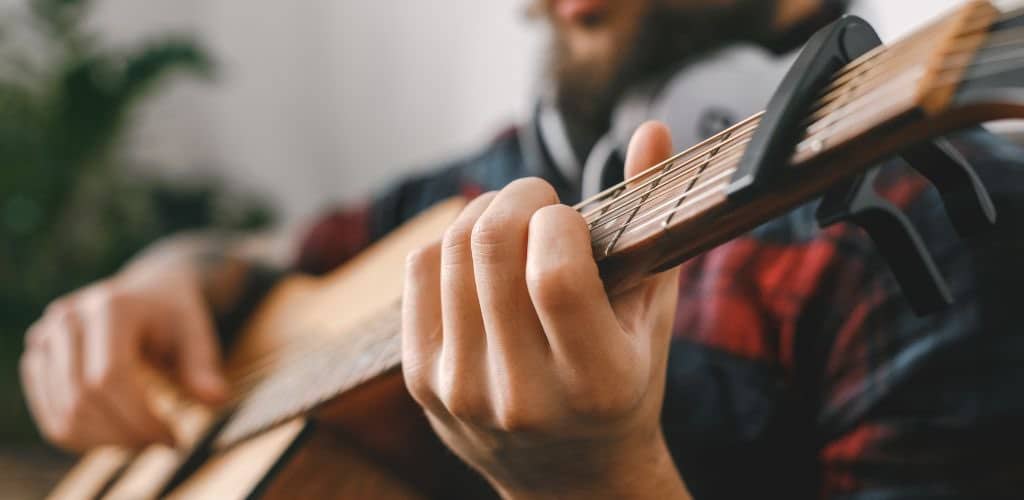
The 20th century brought about significant cultural and musical shifts, and the capo played a pivotal role in these changes. Let’s dive into its impact during this vibrant era.
Rise of Folk Music: The folk music revival of the 1960s introduced the capo to a new generation of musicians. Artists like Bob Dylan and Joan Baez used capos to create unique sounds and simplify their playing.
Rock and Roll Influence: As rock and roll exploded onto the scene, the capo continued to be a valuable tool for guitarists. Its versatility allowed musicians to explore different tonalities and create distinctive riffs.
Innovations in Design: The 20th century saw further innovations in capo design, including the introduction of spring-loaded models. These designs made it easier to attach and detach capos quickly, enhancing their functionality.
Mainstream Acceptance: By the end of the century, the capo had become a mainstream accessory for guitarists of all styles. Its widespread use in popular music solidified its place in the hearts of musicians everywhere.
The Capo Today
Five
Modern capos come in a variety of styles, materials, and mechanisms. From simple rubber designs to high-tech models with built-in tuners, there’s a capo for every guitarist’s preference.
Partial capos are specialized tools used on stringed instruments, particularly guitars, to create unique chord voicings and alternate tunings without needing to retune the entire guitar neck. Unlike traditional guitar capos that clamp all the strings, a partial capo allows for selective fretting of specific strings, enabling players to explore innovative sounds.

Popular types include the Shubb capo, known for its precision and ease of use, and the Hamilton capo, which offers a sturdy design. The drop D capo is a favorite among guitarists who want to quickly switch to drop D tuning while maintaining the ability to play standard chords.
Other variations, like the fifth string capo and yoke capo, provide additional flexibility for different playing styles. Elastic capo are also available for those seeking a lightweight and portable option.
Ultimately, these capos, or “capo tasto,” expand the creative possibilities for fretted instrument players, allowing them to experiment with their music in exciting ways.
Evolution of Capo Design
SIX
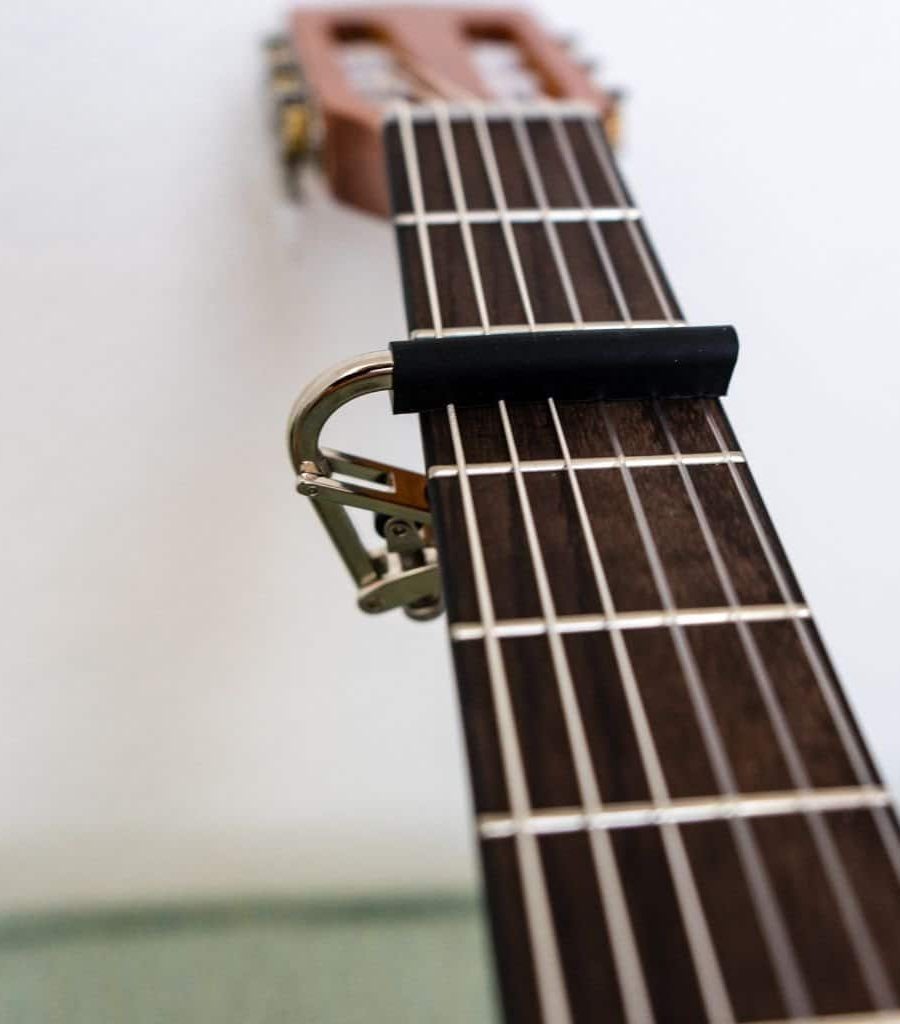
The evolution of capo design has been a fascinating journey, marked by continuous innovation and improvement. One of the earliest designs was the C-clamp capo, a simple yet effective device made from a single piece of metal that curved to cup and squeeze the guitar neck. This rudimentary design laid the groundwork for future advancements. In the late 19th century, James Ashborn revolutionized capo design with his patented lever and cam mechanism. This design allowed for more precise control and easier adjustment, making it a significant milestone in the history of capos.
The Hamilton capo, introduced later, built upon Ashborn’s innovation by adding an adjustable knob on the back, providing even greater precision and reliability.
The 20th century brought about further advancements with the introduction of new materials and designs. The elastic capo, for instance, utilized the natural tension of elastic to hold the capo bar in place, offering a lightweight and portable option for musicians.
The Shubb capo, introduced in the 1970s, became renowned for its “Tight-Fastening” mechanism, which ensured a secure fit and easy adjustment.
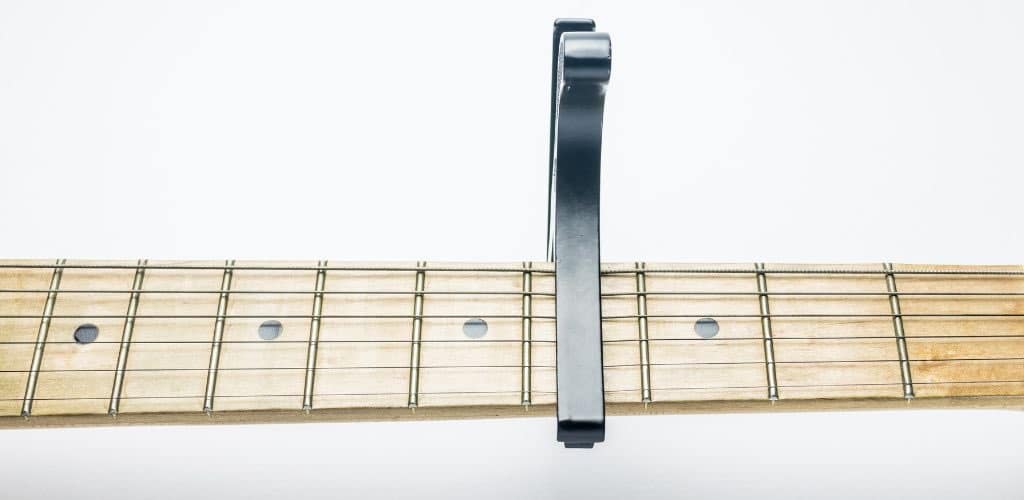
In recent years, the trend has shifted towards more versatile and adjustable capos. Partial capos, which allow for selective fretting of specific strings, have opened up new possibilities for creating unique chord voicings and alternate tunings. The drop D capo, designed specifically for drop D tuning, has become a favorite among guitarists seeking a deeper, fuller sound.
Overall, the evolution of capo design has been driven by the need for more precise control, versatility, and ease of use. As guitar playing continues to evolve, it is likely that capo design will continue to innovate and adapt to meet the needs of musicians.
Types of Capos
seven
There are several types of capos available today, each offering unique characteristics and advantages to suit different playing styles and preferences.
These capos cover all six strings of the guitar, allowing musicians to raise the pitch of the entire instrument. They are ideal for quickly changing keys without altering finger positions, making them a staple for many guitarists.
Unlike full capos, partial capos cover only some of the strings. This allows for more complex and nuanced sounds, enabling players to experiment with innovative chord voicings and alternate tunings without retuning the entire guitar neck.
Specifically designed for drop D tuning, these capos allow guitarists to quickly switch to a deeper, fuller sound while maintaining the ability to play standard chords. They are particularly popular in genres like rock and metal.
Known for their ease of use and versatility, yoke capos use a yoke-style design to hold the strings in place. They provide a secure fit and are often favored for their quick and smooth operation.
These capos use the natural tension of elastic to hold the bar in place. They are lightweight, portable, and simple to use, making them a convenient option for musicians on the go.
eaturing an adjustable knob on the back, Hamilton capos offer precise control and are known for their durability and reliability. They are a popular choice for guitarists seeking a robust and dependable capo.
Renowned for their high-quality materials and durable construction, Shubb capos use a unique “Tight-Fastening” mechanism to secure the capo to the neck of the guitar. They are highly regarded for their precision and ease of use.
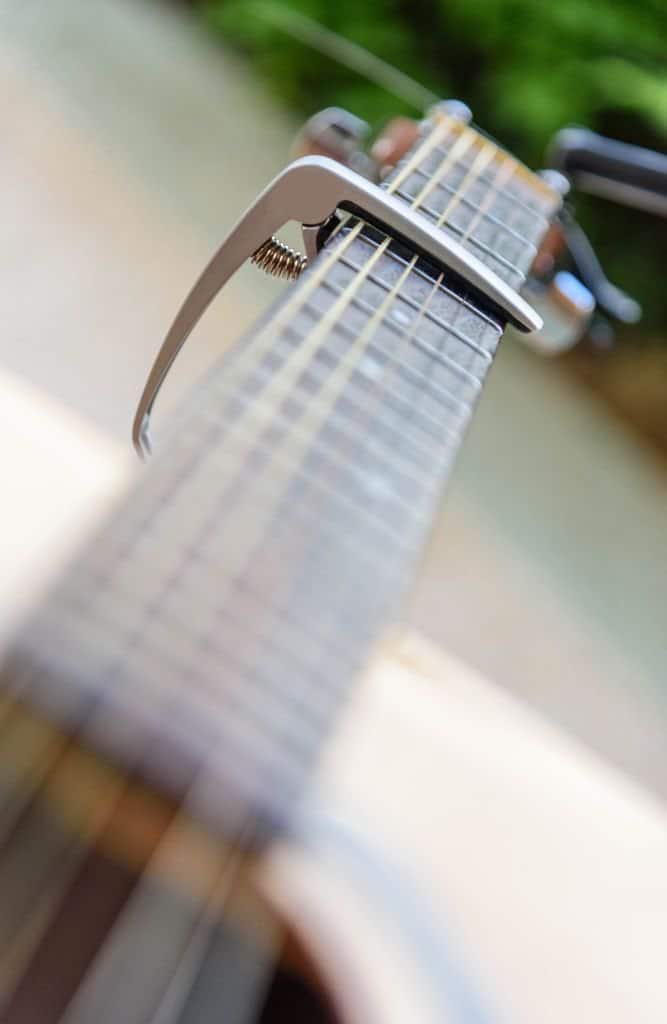
Each type of capo has its own unique advantages and disadvantages, and the choice of which one to use will depend on the individual musician’s needs and preferences. Whether you’re looking for versatility, ease of use, or specific tuning capabilities, there’s a capo out there to suit your playing style.
The Capo's Cultural Impact on Stringed Instruments
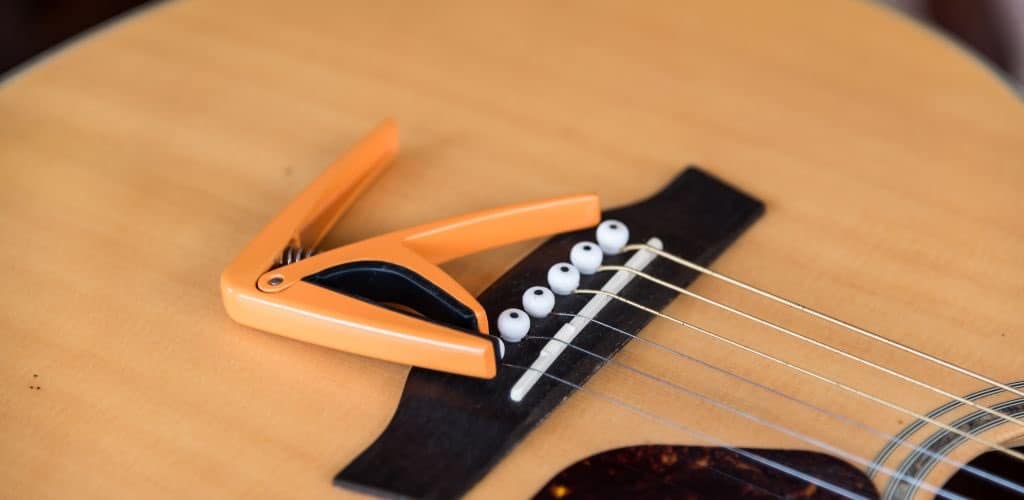
The capo has influenced music and made its mark on culture. Let’s take a moment to appreciate its broader impact.
Symbol of Accessibility: The capo represents accessibility in music, allowing players of all skill levels to experiment with different keys. This democratization of music encourages creativity and exploration.
Connection Across Generations: The capo serves as a bridge between generations of musicians, linking the past with the present. Many guitarists have fond memories of learning to play songs using a capo, creating a shared experience.
Inspiration for Songwriting: Many songwriters credit the capo with inspiring their creative process. By changing the key, musicians can unlock new melodies and chord progressions that might not have been discovered otherwise.
Cultural Icon: The capo has become a cultural icon in the world of music, often associated with folk, country, and rock genres. Its presence in popular music has solidified its status as a beloved accessory for guitarists everywhere.
The Future of the Capo in Alternate Tunings

As we look to the future, what lies ahead for the humble capo? Let’s explore the potential developments and trends that may shape its evolution.
Innovative Designs: With ongoing advancements in materials and technology, we can expect to see even more innovative capo designs. Future capos may incorporate features that enhance musicians’ usability and performance.
Sustainability: As environmental awareness grows, there may be a shift toward sustainable materials in capo production. Eco-friendly designs appeal to conscious consumers who want to make responsible choices.
Integration with Technology: The integration of capos with digital technology may continue to evolve, offering features that enhance the playing experience. Imagine a capo that not only changes keys but also provides real-time feedback on tuning and pitch!
Continued Cultural Relevance: The capo will likely remain a staple in the music community, continuing to inspire musicians across genres. Its versatility and accessibility will ensure that it remains a beloved tool for guitarists for years to come.
Partial Capos Recommendation
Shubb C1 Steel String Guitar Capo, Polished Nickel

DESIGNED FOR: guitars with steel strings
FEATURES: With a stylish finish that complements the appearance of any guitar
OTHER INFO: Uses a simple layout to provide a seamless performance
Shubb C1 Steel String Guitar Capo, Polished Nickel
- Offers players fantastic sonic exploration
- Keeps your instrument from needing continuous tuning
- A Shubb capo is designed for the finest possible playing experience
- a little more expensive than competing brands
When you click ‘Check Price’, you’ll see there are loads of great places to buy this item. Our personal favorite is Sweetwater for the US, and Thomann and Gear4Music for the UK & Europe.
They are the largest music retailers, with excellent customer service, competitive prices, really fast shipping, and the longest guarantees.
The professional musician who wrote this article combined many things,
from the product build, manufacturer’s reputation through to feedback
from other users, to create our famous TedScore™.
Ortega OCAPO-CR Nylon String Capo, Chrome
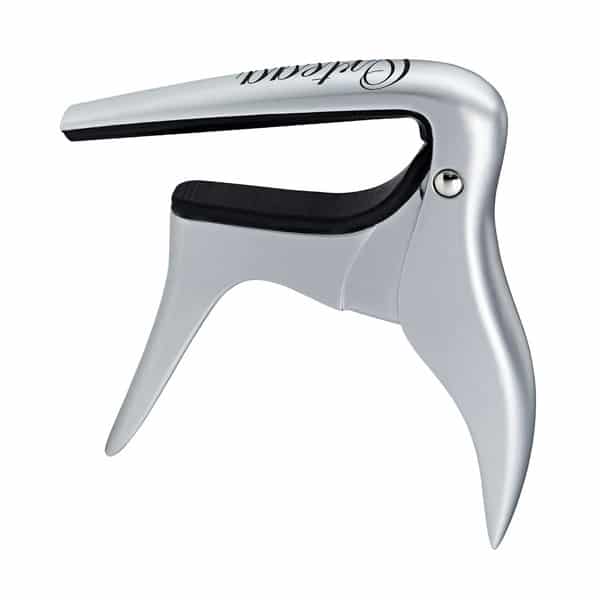
DESIGNED FOR: Beginner to advanced classical guitarists
OTHER INFO: Maximum Width: 52mm
FEATURES: Robust zinc construction
Ortega OCAPO-CR Nylon String Capo, Chrome
- Allows you to adjust your guitar's tuning quickly and easily
- Durable
- Rubber cushion fits comfortably around the neck and fingerboard
- Curved design for improved fretboard contact
- May not fit the width of all classical guitars
- Not compatible with steel string guitars
When you click ‘Check Price’, you’ll see there are loads of great places to buy this item. Our personal favorite is Sweetwater for the US, and Thomann and Gear4Music for the UK & Europe.
They are the largest music retailers, with excellent customer service, competitive prices, really fast shipping, and the longest guarantees.
The professional musician who wrote this article combined many things,
from the product build, manufacturer’s reputation through to feedback
from other users, to create our famous TedScore™.
Dunlop 83CB Trigger Capo, Acoustic Curved, Black
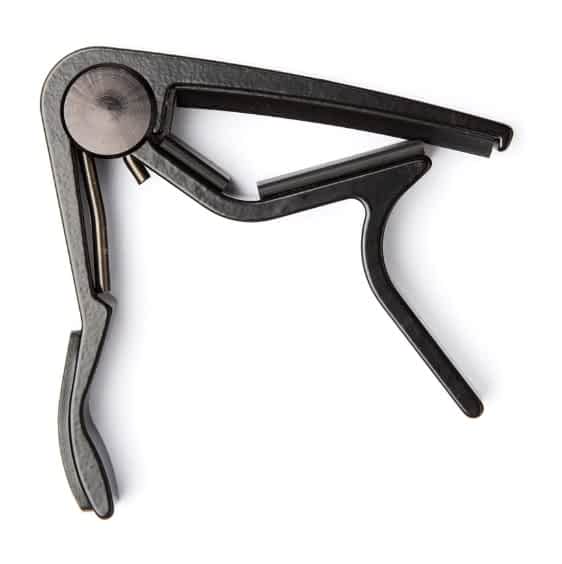
PERFECT FOR: 6 or 12-string acoustic guitars
FEATURES: Boasts outstanding durability with its aircraft-quality aluminium
OTHER INFO: Comes with padding to ensure your guitar's safety
Dunlop 83CB Trigger Capo, Acoustic Curved, Black
- Provides secure clamping
- Super easy to use thanks to smooth spring-action
- A little more pricey compared to other brands
When you click ‘Check Price’, you’ll see there are loads of great places to buy this item. Our personal favorite is Sweetwater for the US, and Thomann and Gear4Music for the UK & Europe.
They are the largest music retailers, with excellent customer service, competitive prices, really fast shipping, and the longest guarantees.
The professional musician who wrote this article combined many things,
from the product build, manufacturer’s reputation through to feedback
from other users, to create our famous TedScore™.
when was the capo invented:
The Capo's Timeless Journey
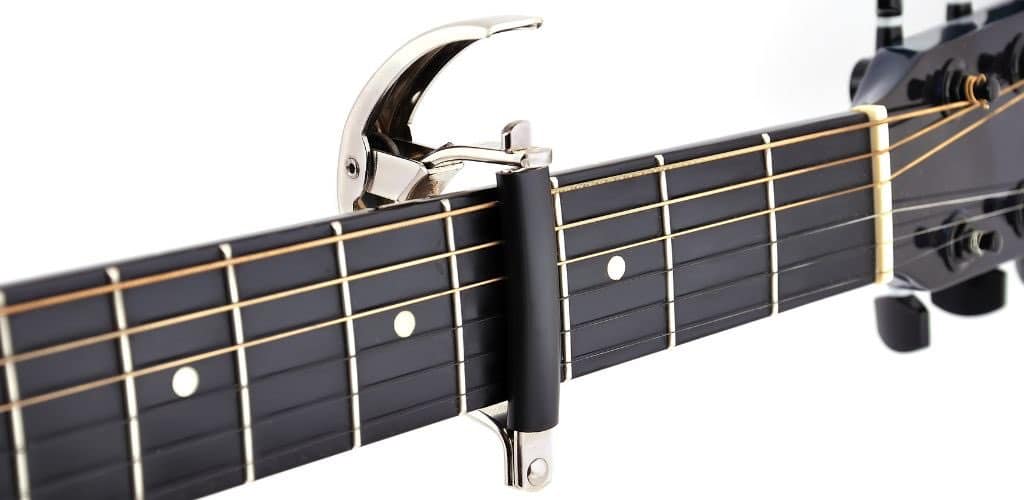
The capo has come a long way since its early beginnings. From ancient stringed instruments to modern innovations, this simple yet effective tool has transformed the way musicians approach their craft.
Its rich history reflects the evolution of music itself, showcasing the universal desire to explore sound and creativity. As we look to the future, the capo will undoubtedly continue to inspire and empower musicians around the world.
So, whether you’re a seasoned player or just starting your musical journey, embrace the capo and all the possibilities it brings. Happy strumming!
Don’t go yet…
Check out our article on “What Is The Best Guitar Capo For Electric Guitar?” to discover top recommendations that will enhance your playing experience and help you find the perfect capo for your needs!
FAQ's
Capos have been used for centuries, with their origins dating back to the Renaissance period in Europe, around the 16th century. However, the modern design of the capo as we know it today became popular in the 19th century.
A guitarist would use a capo to change the key of a song quickly and easily without altering finger positions, allowing for more comfortable playing and the ability to match their vocal range. Additionally, it can create unique chord voicings and enhance the overall sound of the guitar.
“Capo” is short for “capotasto,” which is an Italian term meaning “head of the fingerboard.” It refers to the device used to clamp down the strings at a specific fret to change the pitch of the guitar.
Yes, The Beatles frequently used a capo in their songs to achieve different keys and tonalities, enhancing their musical versatility. Notable examples include songs like “Here Comes the Sun” and “If I Fell,” where the capo helped create their signature sound.


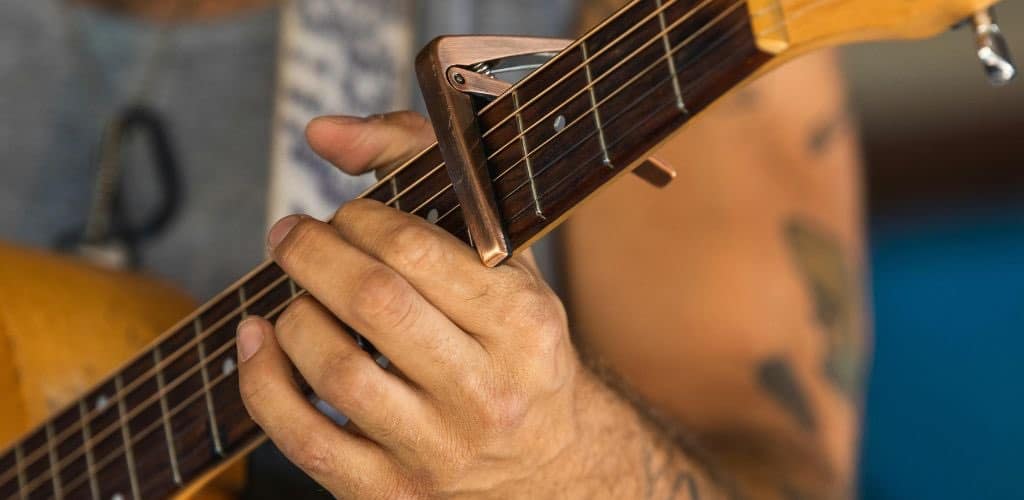








so im wondering does using a capo on diff frets change the type of music u can play like can it make a song sound completely different just by moving it up or down? always thought these were just for making it easier to hit certain chords without stretching your fingers all over the place hmm
Yeah boosts creativity big time!
Absolutely, moving a capo changes the key and can indeed give songs a new vibe. It’s a quick way to test different moods without altering your fingering technique too much.
Really fascinated by the historical journey of the capo through time. It’s interesting to see how a simple device for changing the pitch has evolved and found its place across various musical genres. The section on its development during the Renaissance particularly caught my eye. The craftsmanship of instruments and accessories from that era always has such a rich story. Curious if there are any notable musicians from that time who favored the capo, or if it was seen as more of a utility than an artistic choice? Great read, Robert Emery. Keeps one thinking about the unsung heroes of music history.